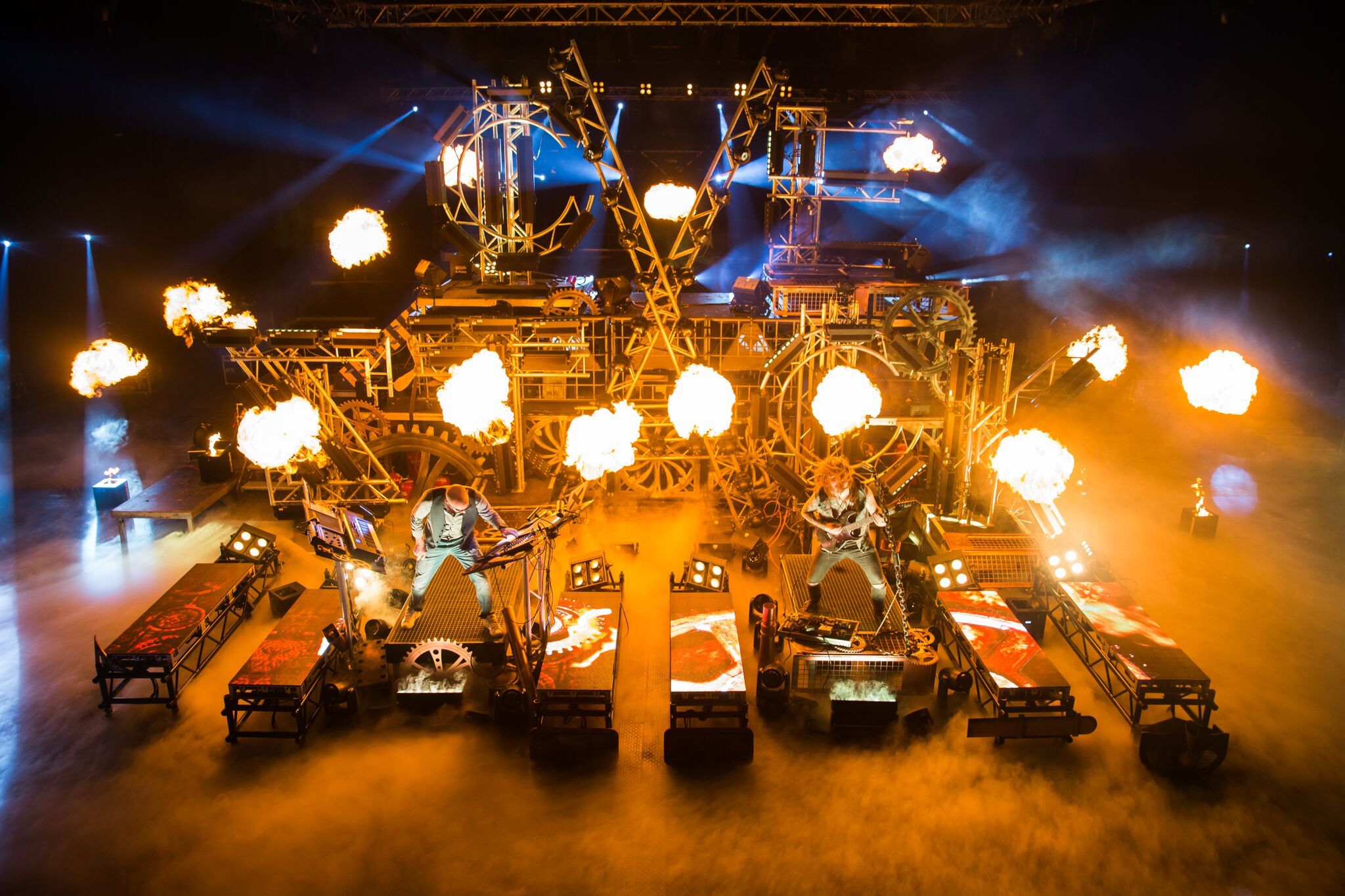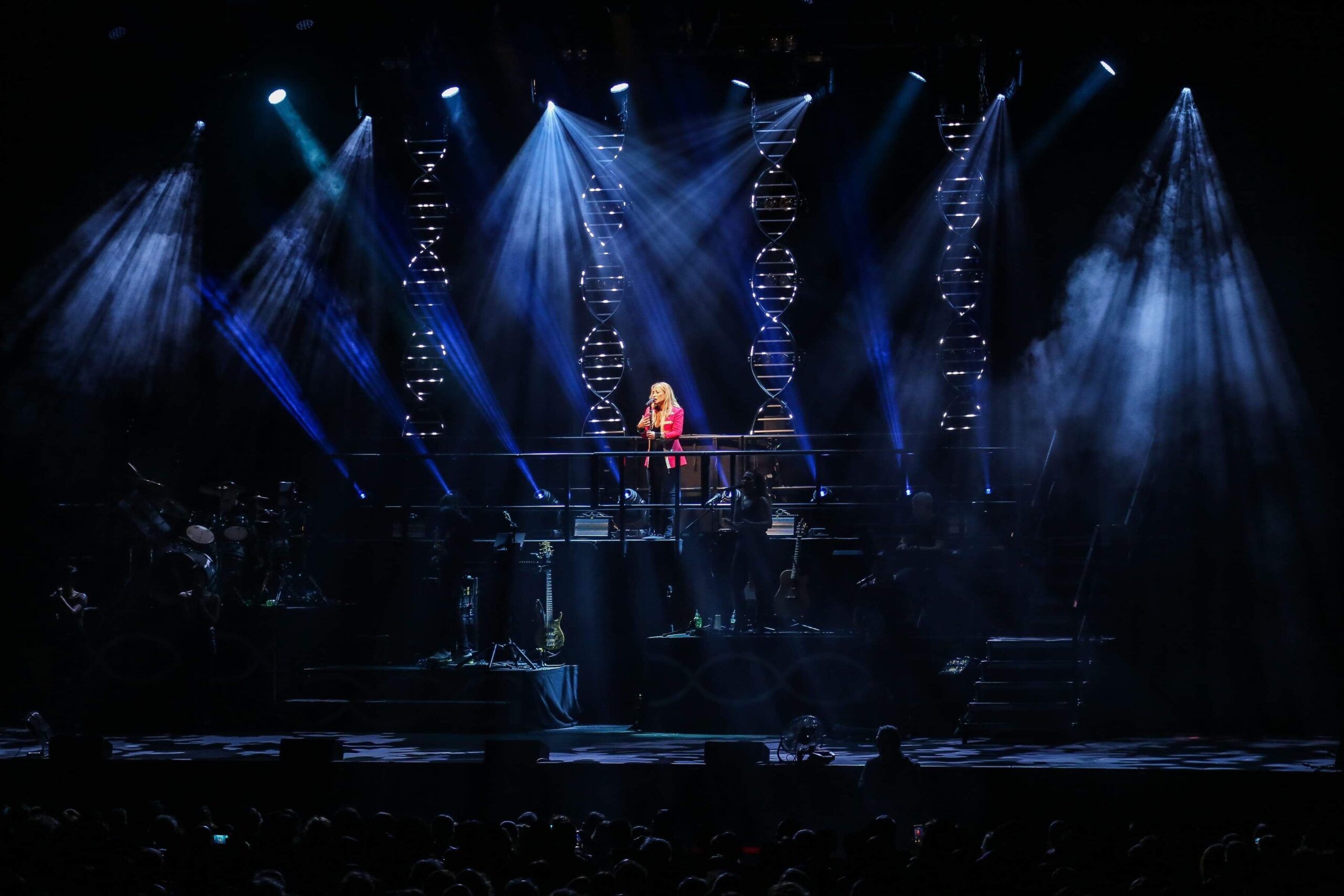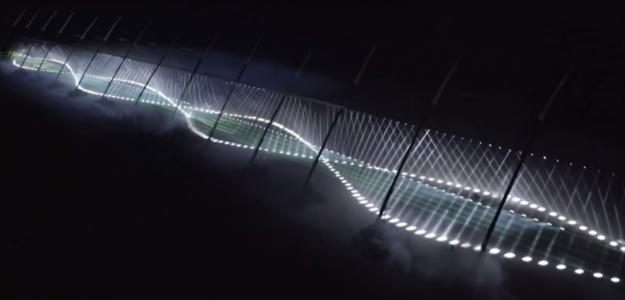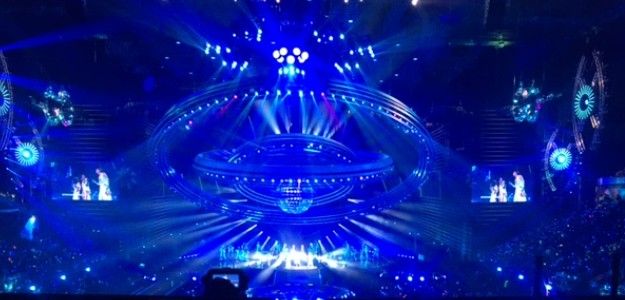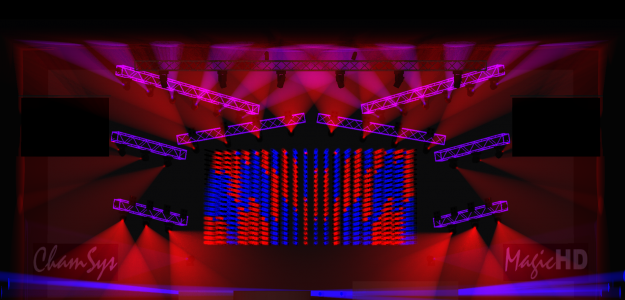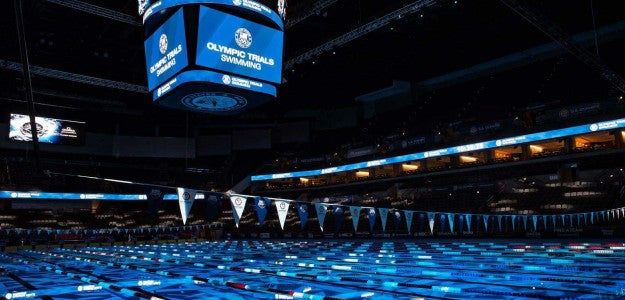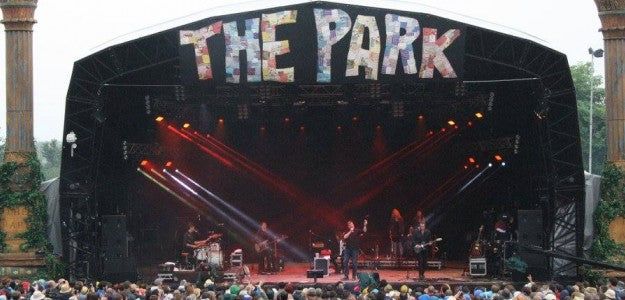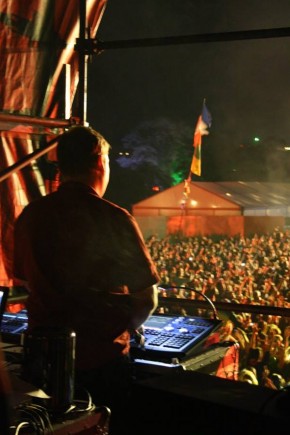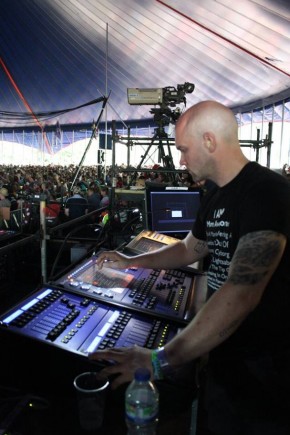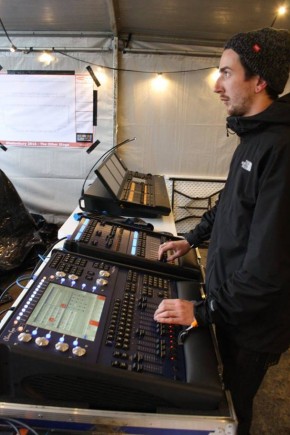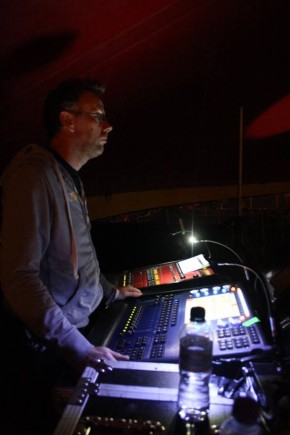Jason Bullock Simplifies Complexity with ChamSys on Wiz Khalifa Summer Tour
NEW YORK – With its 40 universes, massive video panels that rise more than 20-feet over the stage, 350 lighting fixtures including moving wave lasers, and 200 pages of cues, the visual panorama supporting Wiz Khalifa on his summer tour is anything but “simple.” On the contrary, it pulls fans into an overwhelmingly powerful maze of searing multi-layered images that have the immersive complexity of a deep dream.
Still, when Jason Bullock discusses the show for his longtime client, the word simple comes up often. Of course, the New York-based designer isn’t talking about the engaging visuals that transform the stage, but the smooth process behind their creation and execution with his ChamSys MagicQ MQ500 Stadium.
“So, when you’re involved in a massive creation you want tools that make the process simple, and this is one of the beauties of ChamSys,” said Bullock, who created the lighting for the show, with the stage layout being designed by Cory FitzGerald of Silent House Productions.
For Bullock, the creative process kicked into high gear outside Chicago when he wrote his show at Upstaging, Inc. “This show is all cue stacked, and I have 200 pages of cues,” he said. “I wrote the whole thing, 28 songs total, in two days. Think about that. My ChamSys allowed me to take old pages, blank their patch, and then add new fixture information. All I had to do after a point was reinsert static information.”
The process would have been “next to impossible” to do this without his ChamSys console, believes Bullock. “ChamSys morphs and clones are incredibly fast,” he said. “Also, the machine itself is absolutely reliable. I never have to set up multiple desks, because the MQ500 supports so many universes consistently with no hiccups.”

For the Wiz Khalifa summer tour, Bullock is carrying his MQ500 and an Extra Wing that he uses to interface with media servers for the two supporting bands. “I am running two opening groups as well as Wiz,” he said. “So, I take their video content on a thumbnail, load it onto the Wing, and set up an execute page. Then their guys can run their videos.”
The video content for Khalifa’s own show encompasses an eight-year retrospective of the superstar’s career. Displayed on the large LED walls positioned throughout the stage, the collection of clips from different time periods creates a deeply evocative mood. “Some of the older images we worked with were lower res, so I just took segments of them and then went to ratio them out,” said Bullock. “The end result was that the vintage shots look as great as the new ones”
In his Wiz Khalifa show, Bullock coordinates these video images with intense bursts of light, crossing beam patterns and generous volumes of fog. The show also features its share of audience lighting, says Bullock “because when Wiz says ‘put your hands in the air,’ he wants to see your hands in the air.”
 Bullock’s ChamSys console helped him orchestrate this array of visuals into a single, powerful and precisely coordinated show. “To be able to run this whole show with no NPU is a beautiful thing,” he said. “That’s what I get with ChamSys. It simplifies operations. The command structure is very straightforward and logical. I can select palettes via hard buttons without having to look through screens, so I can actually be more focused on looking at the show!”
Bullock’s ChamSys console helped him orchestrate this array of visuals into a single, powerful and precisely coordinated show. “To be able to run this whole show with no NPU is a beautiful thing,” he said. “That’s what I get with ChamSys. It simplifies operations. The command structure is very straightforward and logical. I can select palettes via hard buttons without having to look through screens, so I can actually be more focused on looking at the show!”
Being able to group effects on his console is another big-time saver for Bullock. “With ChamSys I have fewer keystrokes because I can group effects,” he said. “So, then I have to press say only 80 buttons instead of 200. This means fewer keystrokes, which is good, because in this line of work keystrokes are money. The more you save, the better.”
Photos: Todd Kaplan
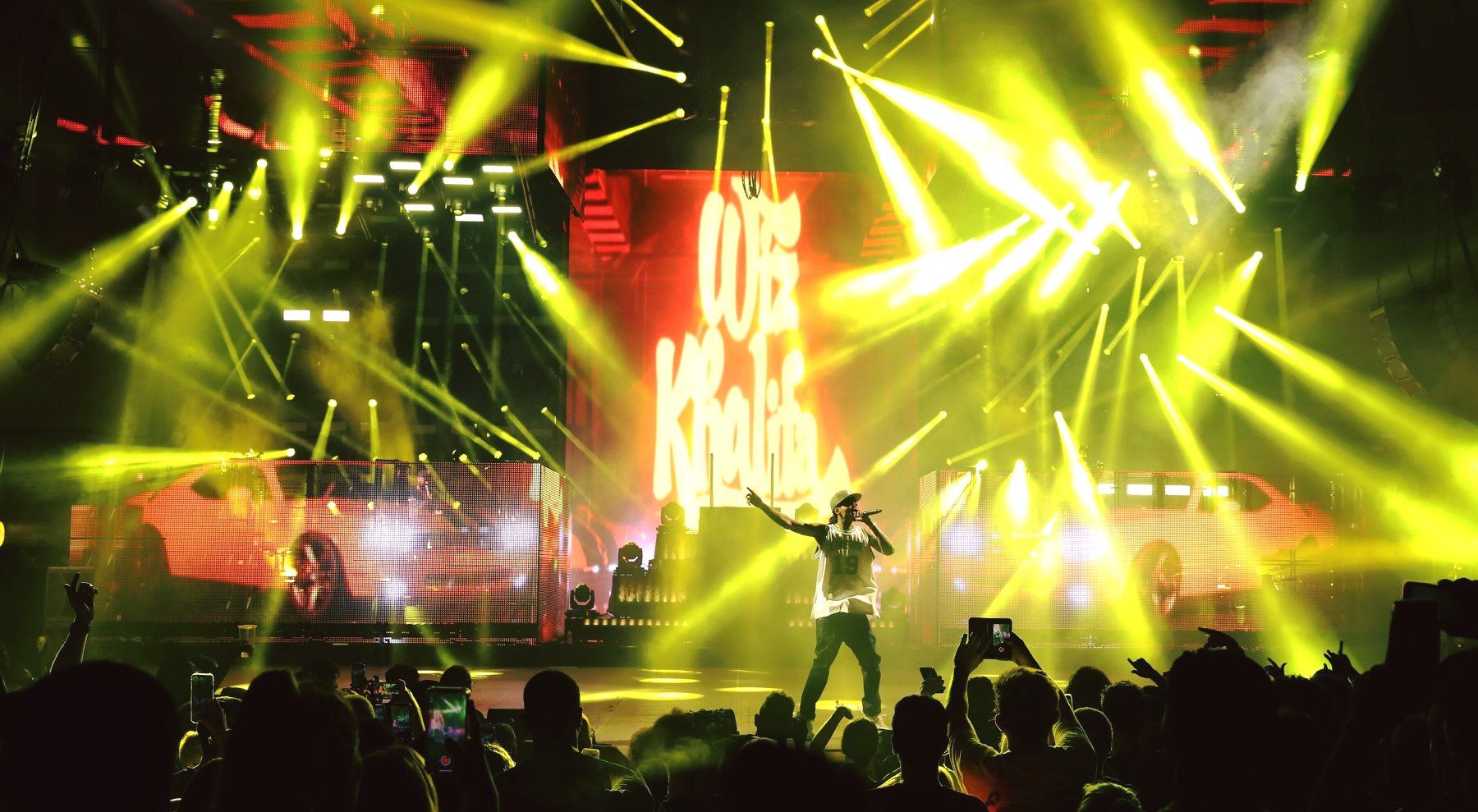
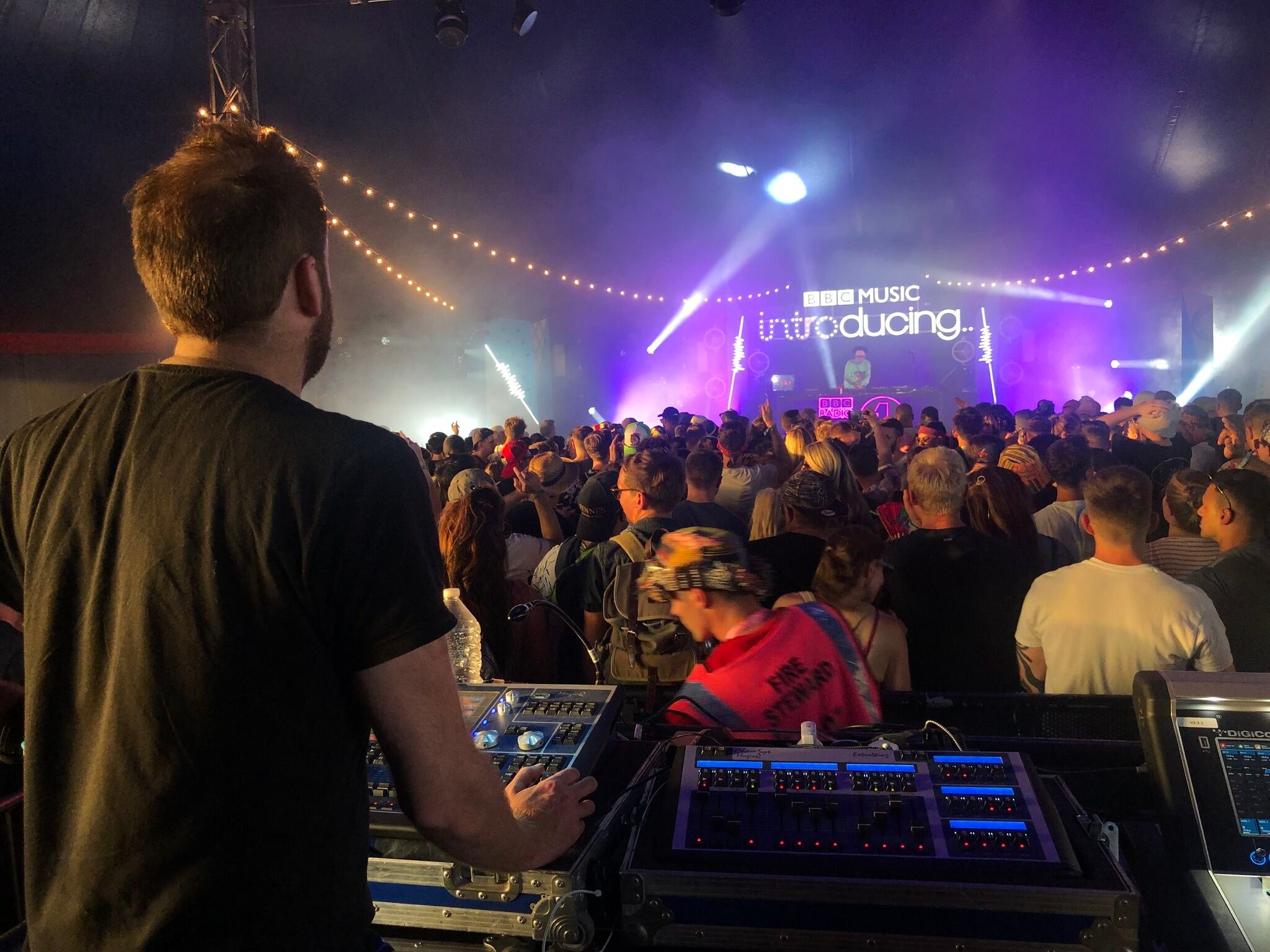
 This year, ChamSys desks were included in the production designs on eight Glastonbury stages, in addition to others being brought to the festival by a host of LDs working for a wide range of artists like Simon Horn for Maribou State, Isabel Del Moral for Rosalia, and Gary Wilson for Lewis Capaldi.
This year, ChamSys desks were included in the production designs on eight Glastonbury stages, in addition to others being brought to the festival by a host of LDs working for a wide range of artists like Simon Horn for Maribou State, Isabel Del Moral for Rosalia, and Gary Wilson for Lewis Capaldi. Southampton-based GLS Lighting supplied a MagicQ MQ100 plus Playback Wing for the Avalon Stage
Southampton-based GLS Lighting supplied a MagicQ MQ100 plus Playback Wing for the Avalon Stage


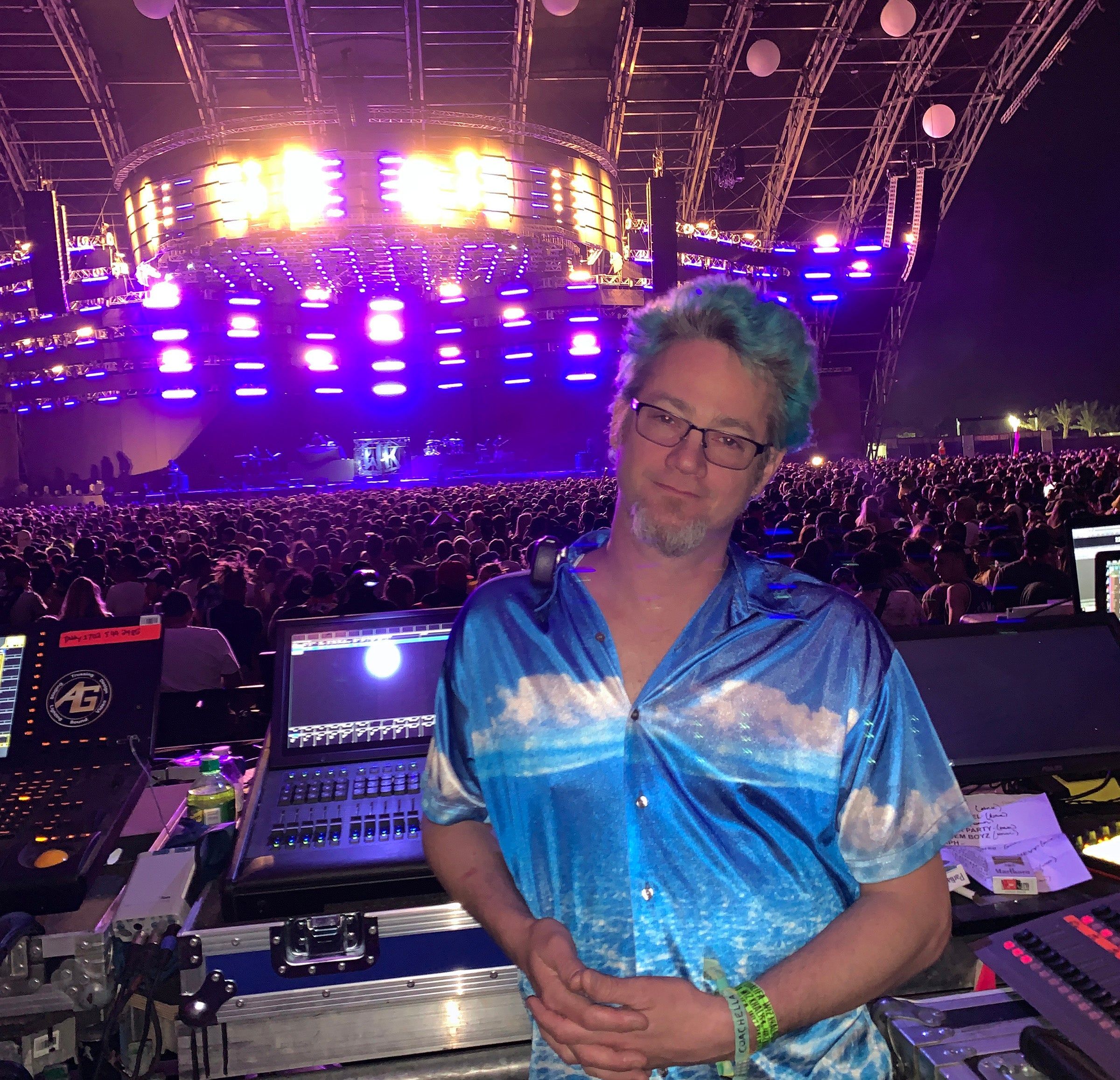
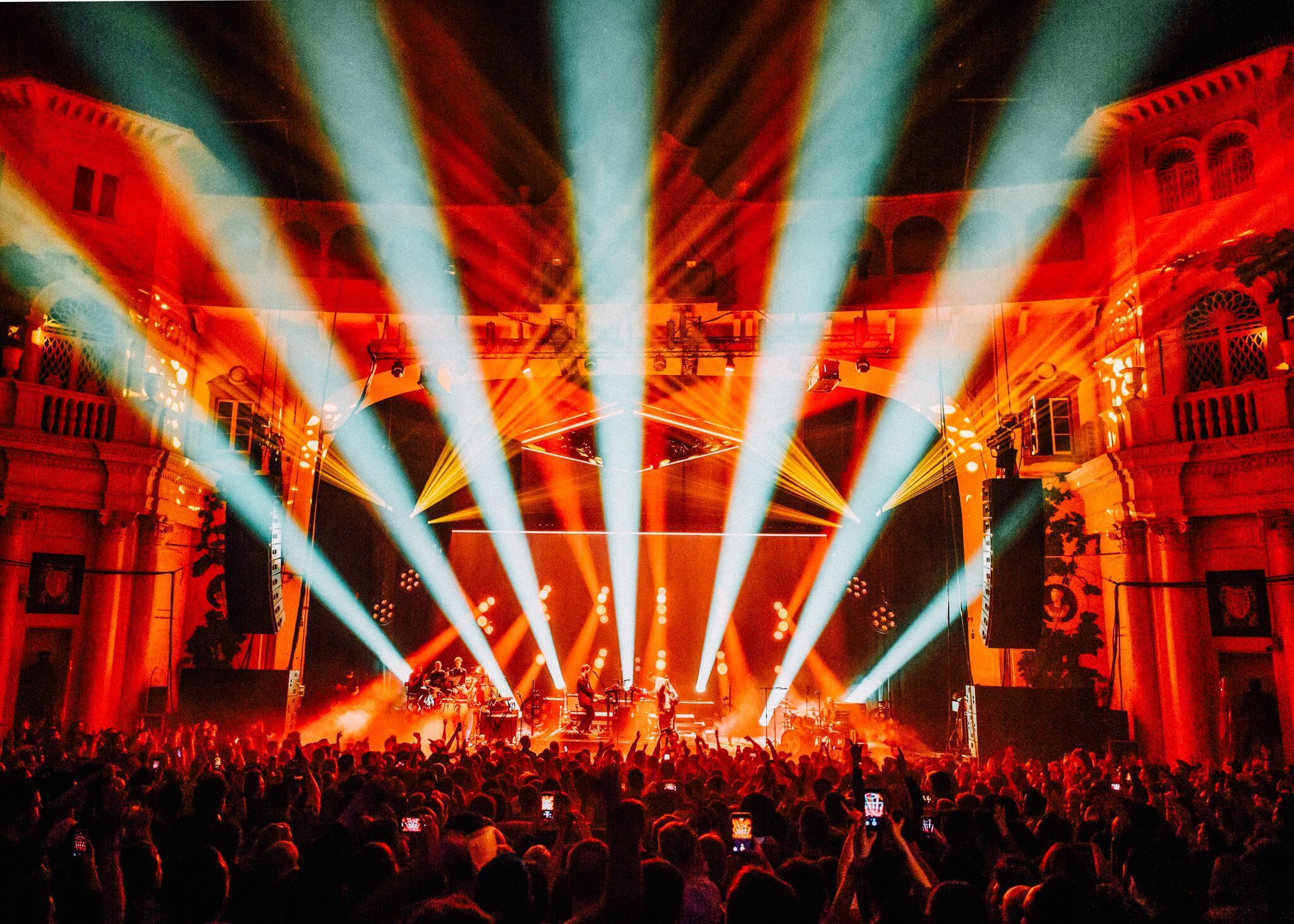
 For Horn, the music of Maribou State is a fertile incubator for his design vison. “I am all about creating drama and movement in the air by not actually wobbling fixtures, but by creating pulse and chase effects in different arrangements and in different orders across the rig,” he said. “Just because a fixture can move doesn’t mean it has to. I can create a sense of movement by doing something as simple as having the beams on the X Bars punch through at different times. This tour is providing me with a wonderful opportunity to demonstrate my design philosophy. The band was very keen on moody dramatic looks and was open to thick smoke and silhouetted moments. It was an LD’s dream come true to be so dynamic.”
For Horn, the music of Maribou State is a fertile incubator for his design vison. “I am all about creating drama and movement in the air by not actually wobbling fixtures, but by creating pulse and chase effects in different arrangements and in different orders across the rig,” he said. “Just because a fixture can move doesn’t mean it has to. I can create a sense of movement by doing something as simple as having the beams on the X Bars punch through at different times. This tour is providing me with a wonderful opportunity to demonstrate my design philosophy. The band was very keen on moody dramatic looks and was open to thick smoke and silhouetted moments. It was an LD’s dream come true to be so dynamic.”

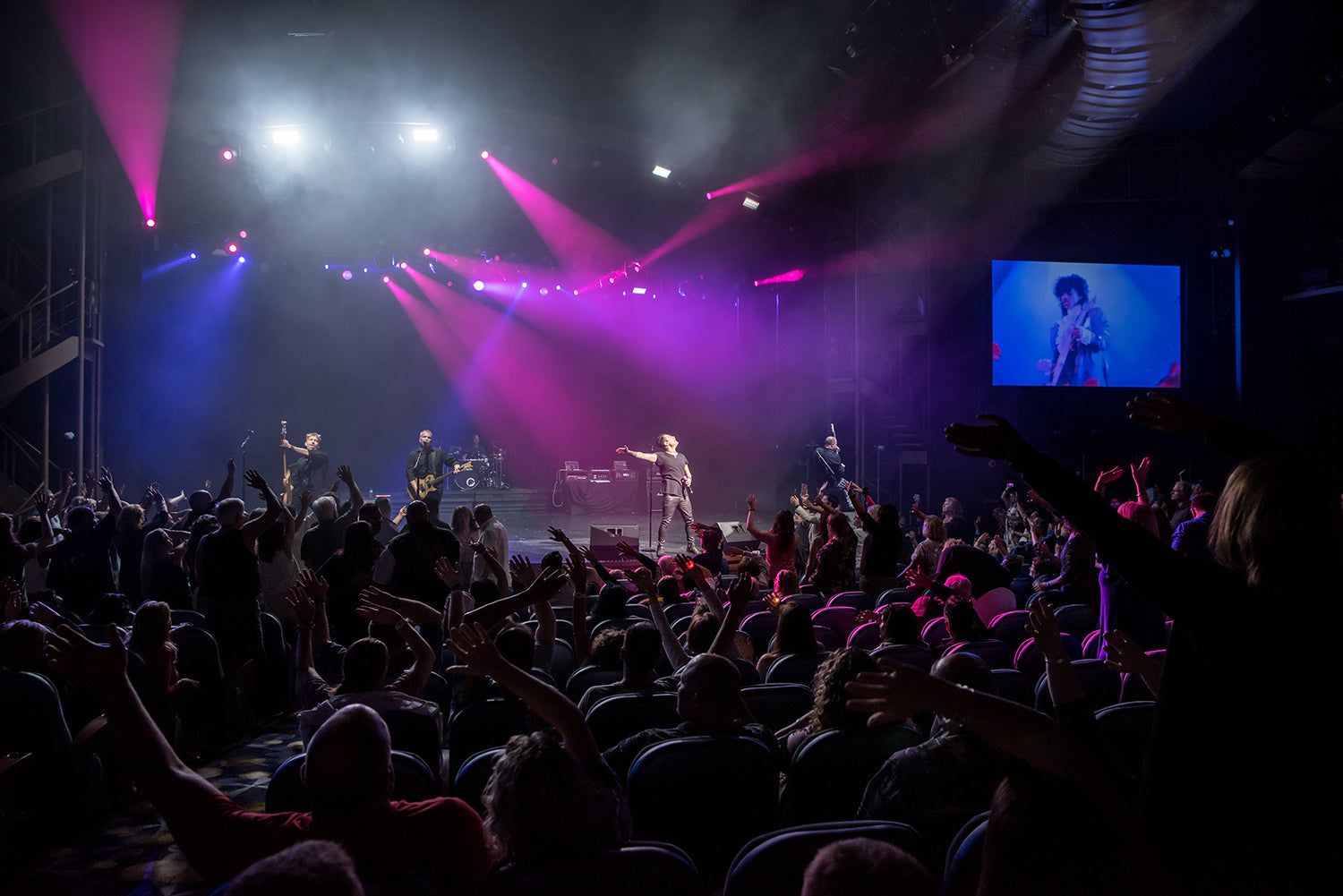
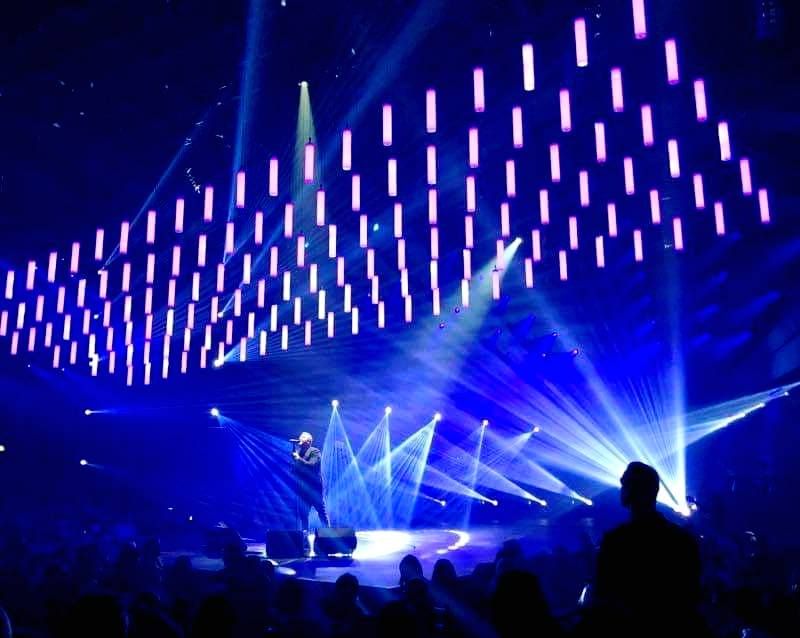



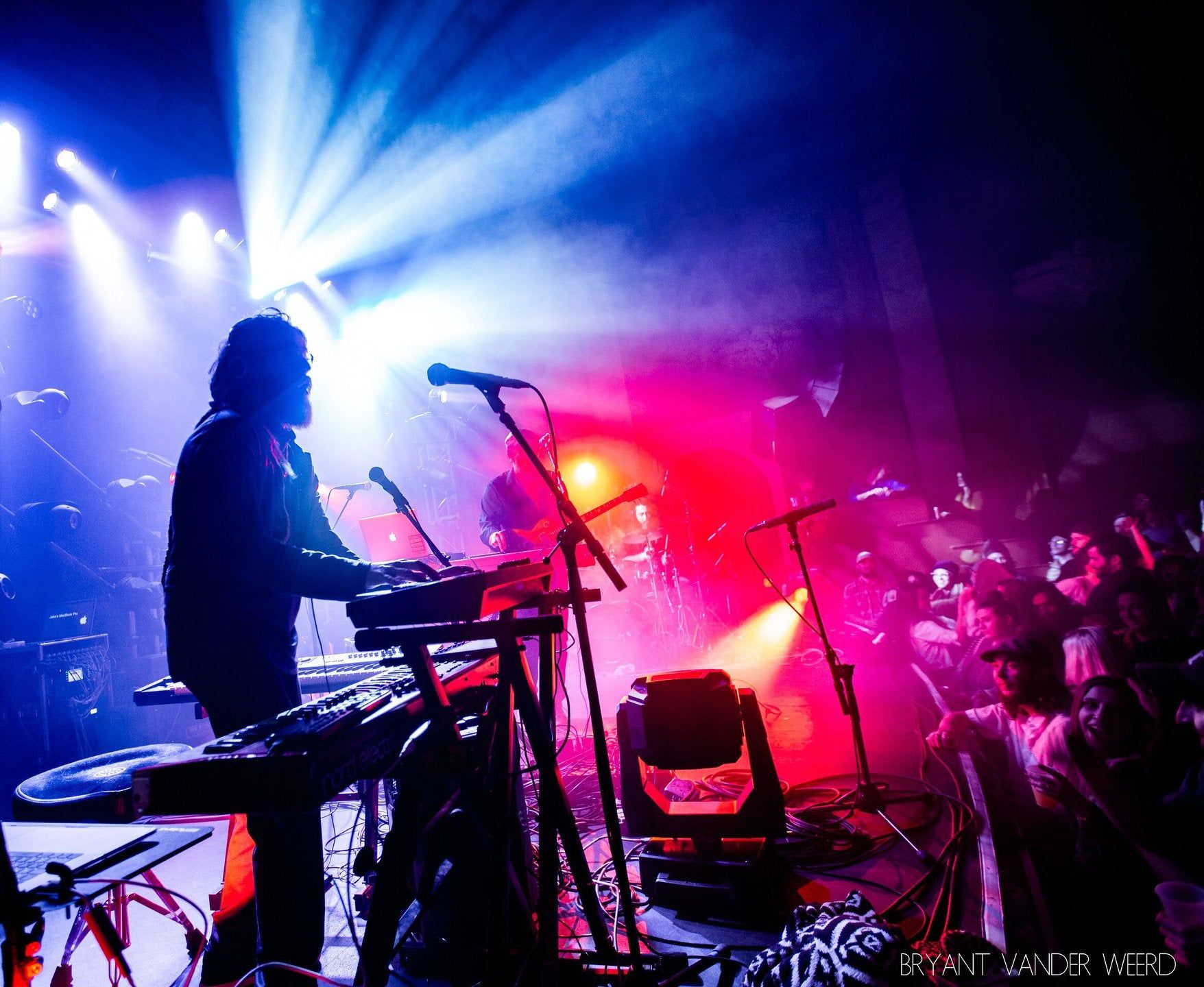

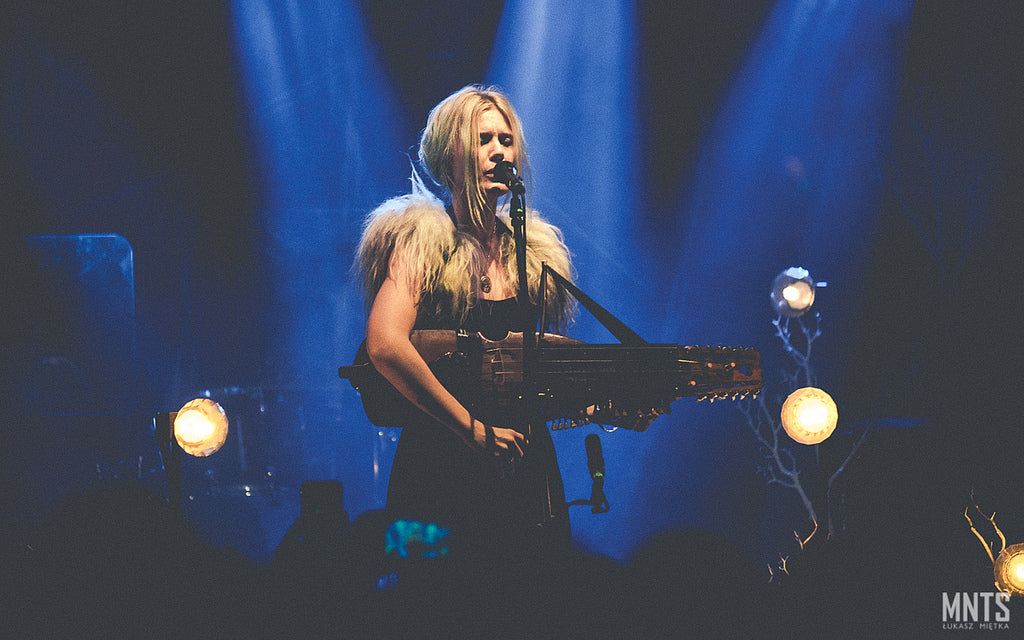


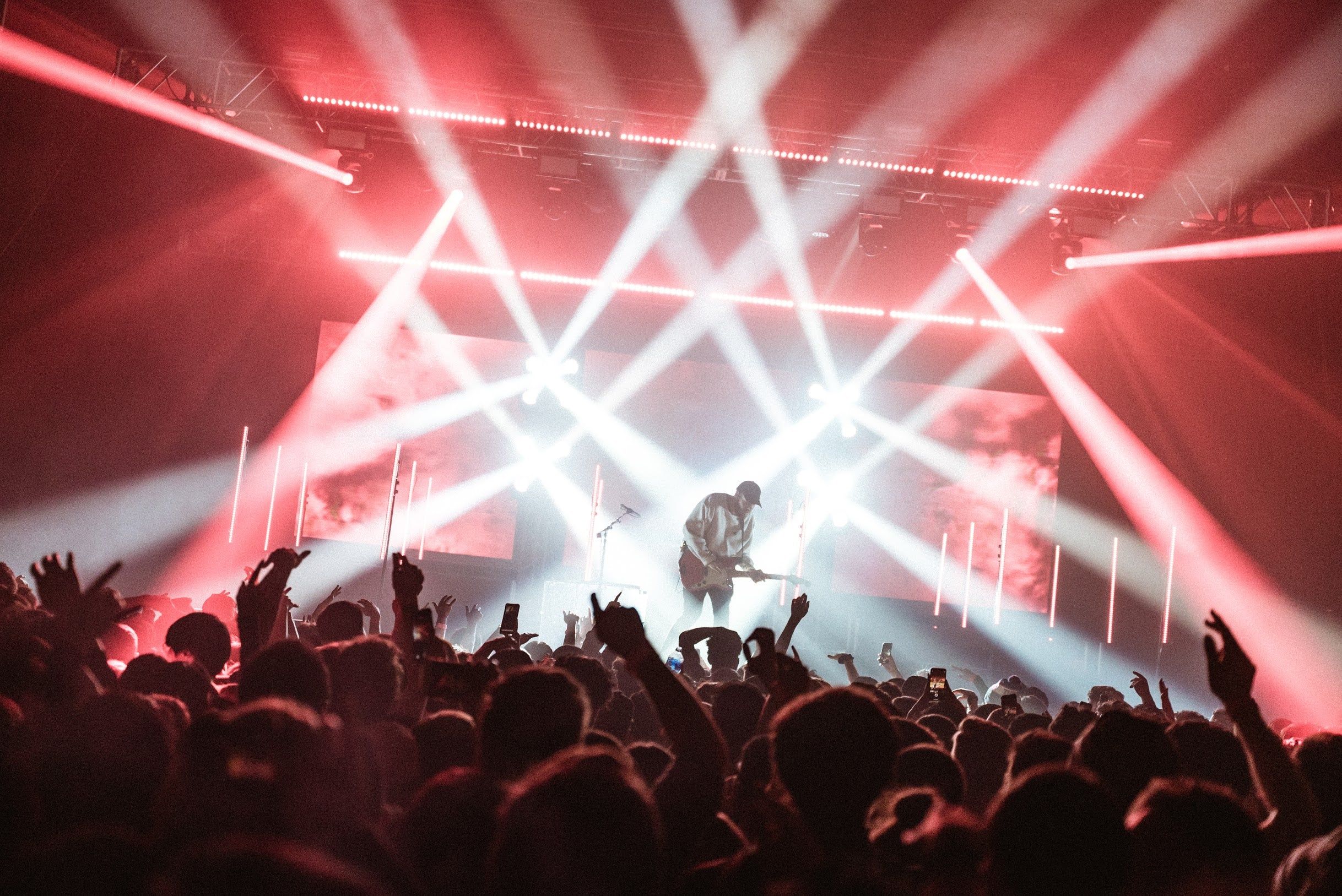
 For
For  The
The 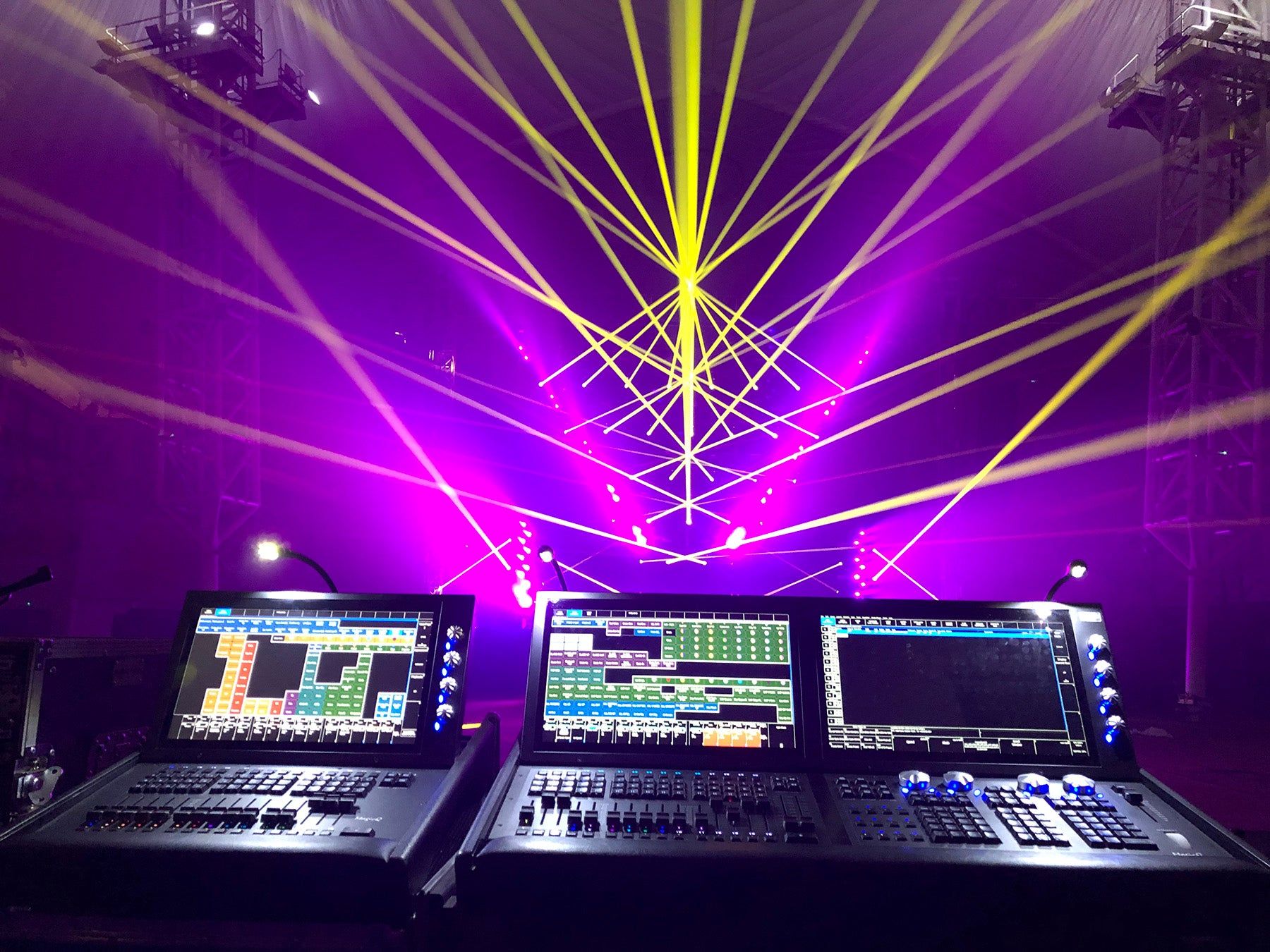
 Horn
Horn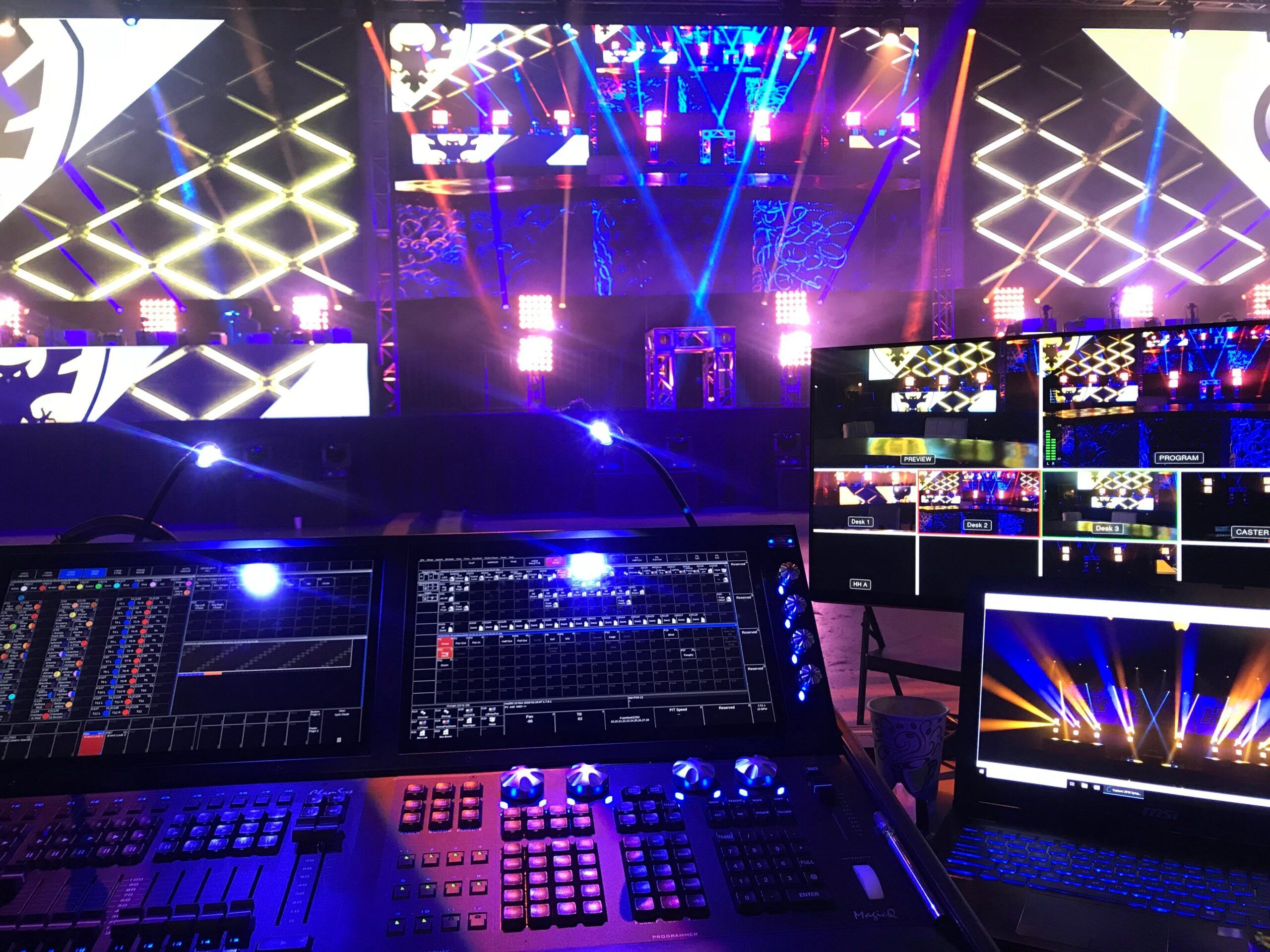
 Both stages had eight-universe shows with 79 controlled fixtures and 12 truss warmers that were set to the game’s branding colors. With the competition broadcast on Hi-Rez TV, the two designers gave prime consideration to creating looks that would translate well on camera, while still creating a friendly environment for the players and live audience.
Both stages had eight-universe shows with 79 controlled fixtures and 12 truss warmers that were set to the game’s branding colors. With the competition broadcast on Hi-Rez TV, the two designers gave prime consideration to creating looks that would translate well on camera, while still creating a friendly environment for the players and live audience. Keeping up with the flow of live gaming for broadcast meant that the programming process had to be done in an “organic and simplified manner,” said Scott. “We used one page of faders that held intensities, movements and FX,” he explained. “All of these playbacks were programmed with everything but color data. We then built a couple of Execute Pages, which held each team’s color palette. We also needed to be able to break up the team colors into ‘rig left, rig right or rig center,’ based on which side they played on, or if they won the match. The custom Execute Pages on the
Keeping up with the flow of live gaming for broadcast meant that the programming process had to be done in an “organic and simplified manner,” said Scott. “We used one page of faders that held intensities, movements and FX,” he explained. “All of these playbacks were programmed with everything but color data. We then built a couple of Execute Pages, which held each team’s color palette. We also needed to be able to break up the team colors into ‘rig left, rig right or rig center,’ based on which side they played on, or if they won the match. The custom Execute Pages on the  In addition to the Execute Pages, Scott found the MagicQ MQ500’s two large screens and the additional banks of playback buttons to be invaluable features in this project. “The extra bank of playback buttons on the top left of the 500 were used for effects that had to be triggered, but would then release automatically,” he said. “Dustin had a great idea to use the extra playback section located in the middle of the desk for quick fixture selection. This allowed us to call up any fixture group at the touch of a button.”
In addition to the Execute Pages, Scott found the MagicQ MQ500’s two large screens and the additional banks of playback buttons to be invaluable features in this project. “The extra bank of playback buttons on the top left of the 500 were used for effects that had to be triggered, but would then release automatically,” he said. “Dustin had a great idea to use the extra playback section located in the middle of the desk for quick fixture selection. This allowed us to call up any fixture group at the touch of a button.” Throughout the competition, Scott and Derry had mobile pre-vis rigs setup in their hotel rooms near the Georgia World Congress Center where the event took place. Scott had a ChamSys Maxi Wing in his room and Derry a PC Wing in his. “We did offsite programming and tweaks throughout the week, so everything always looked right for the competition,” said Scott. Based on the feedback the two designers received about their design, they certainly succeeded in doing that.
Throughout the competition, Scott and Derry had mobile pre-vis rigs setup in their hotel rooms near the Georgia World Congress Center where the event took place. Scott had a ChamSys Maxi Wing in his room and Derry a PC Wing in his. “We did offsite programming and tweaks throughout the week, so everything always looked right for the competition,” said Scott. Based on the feedback the two designers received about their design, they certainly succeeded in doing that.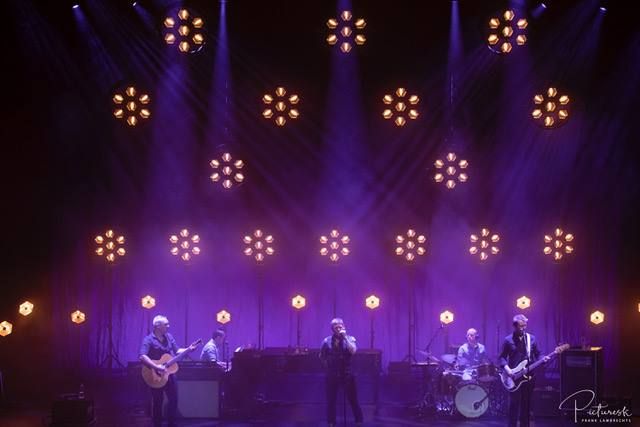



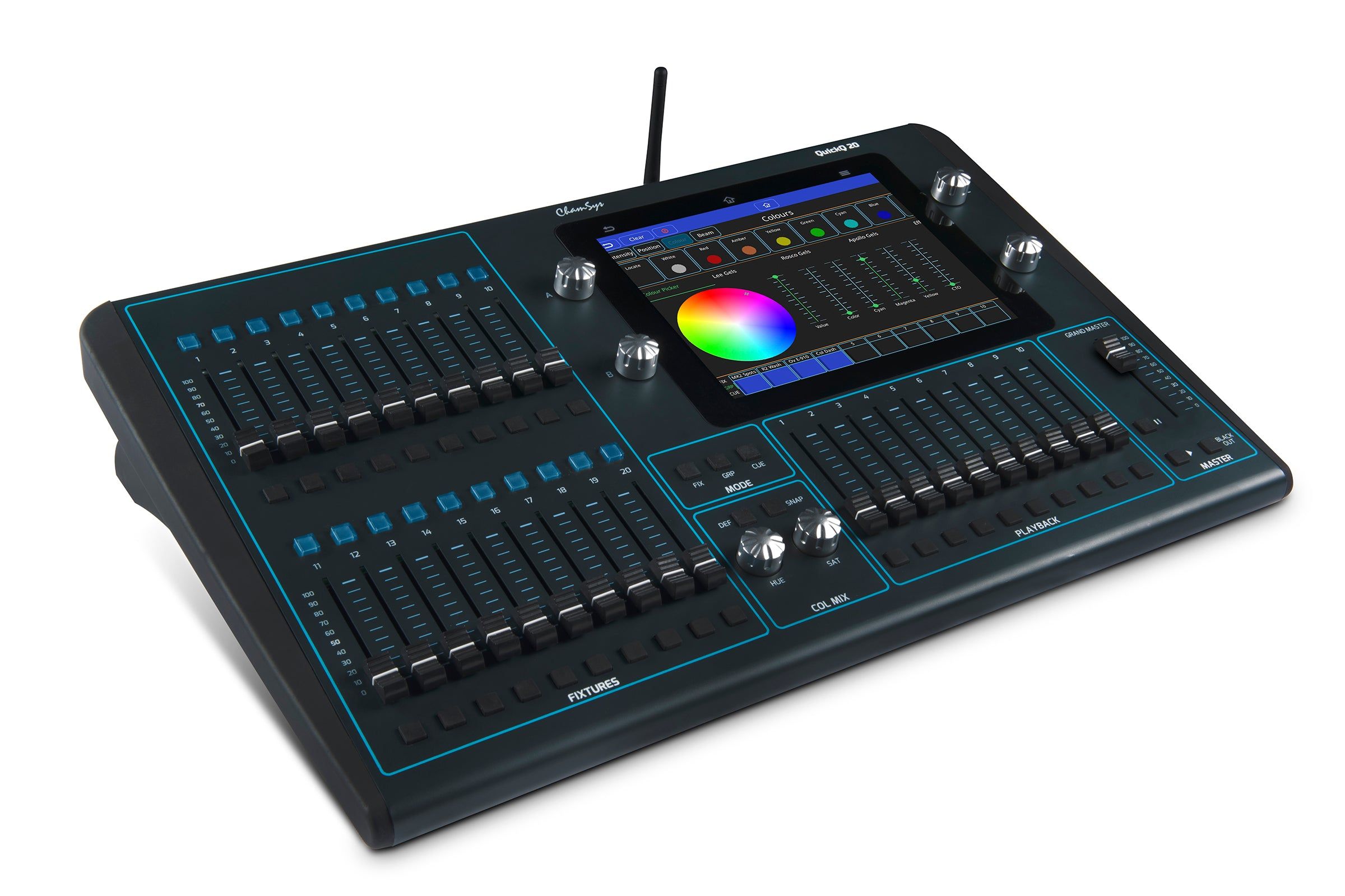
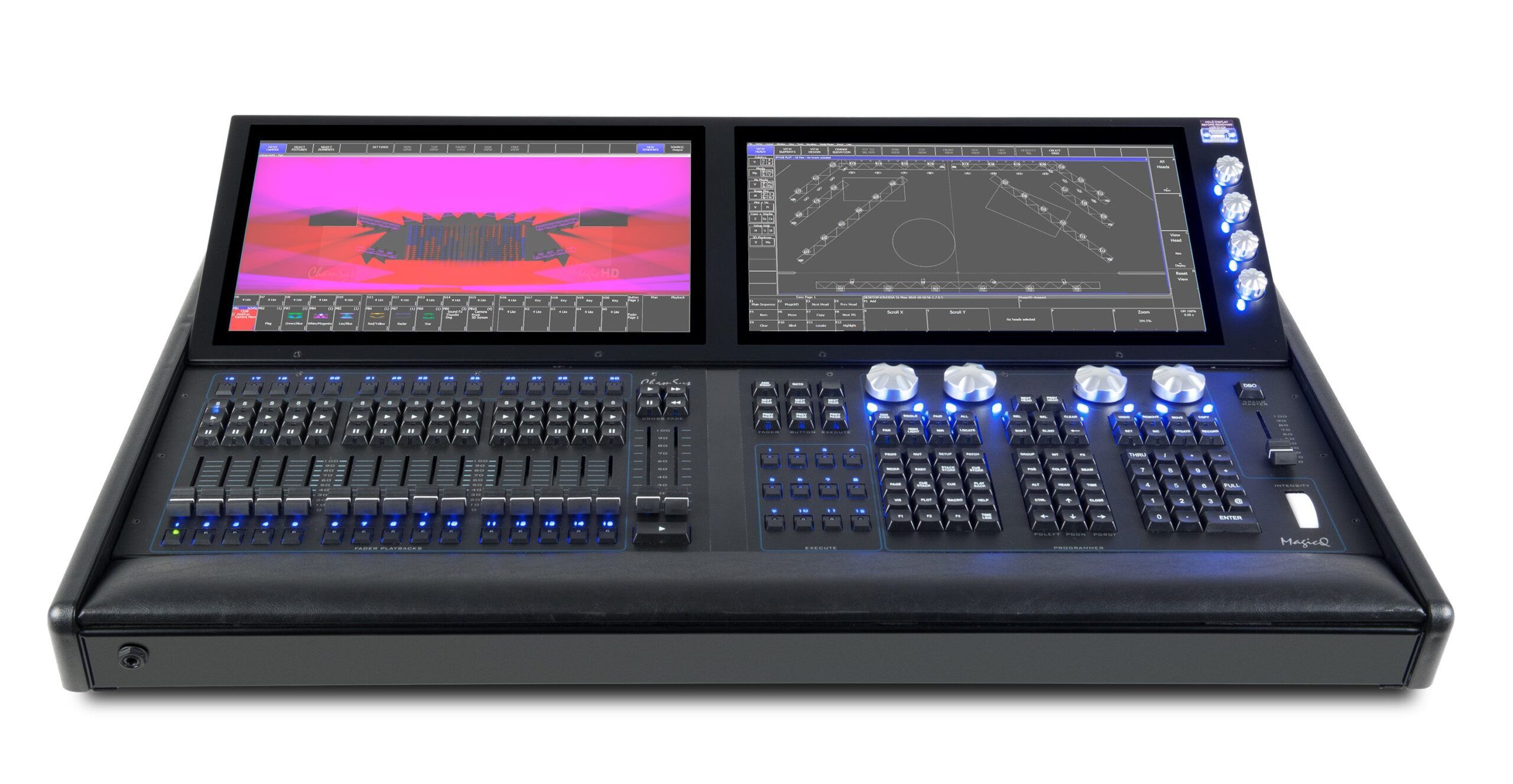
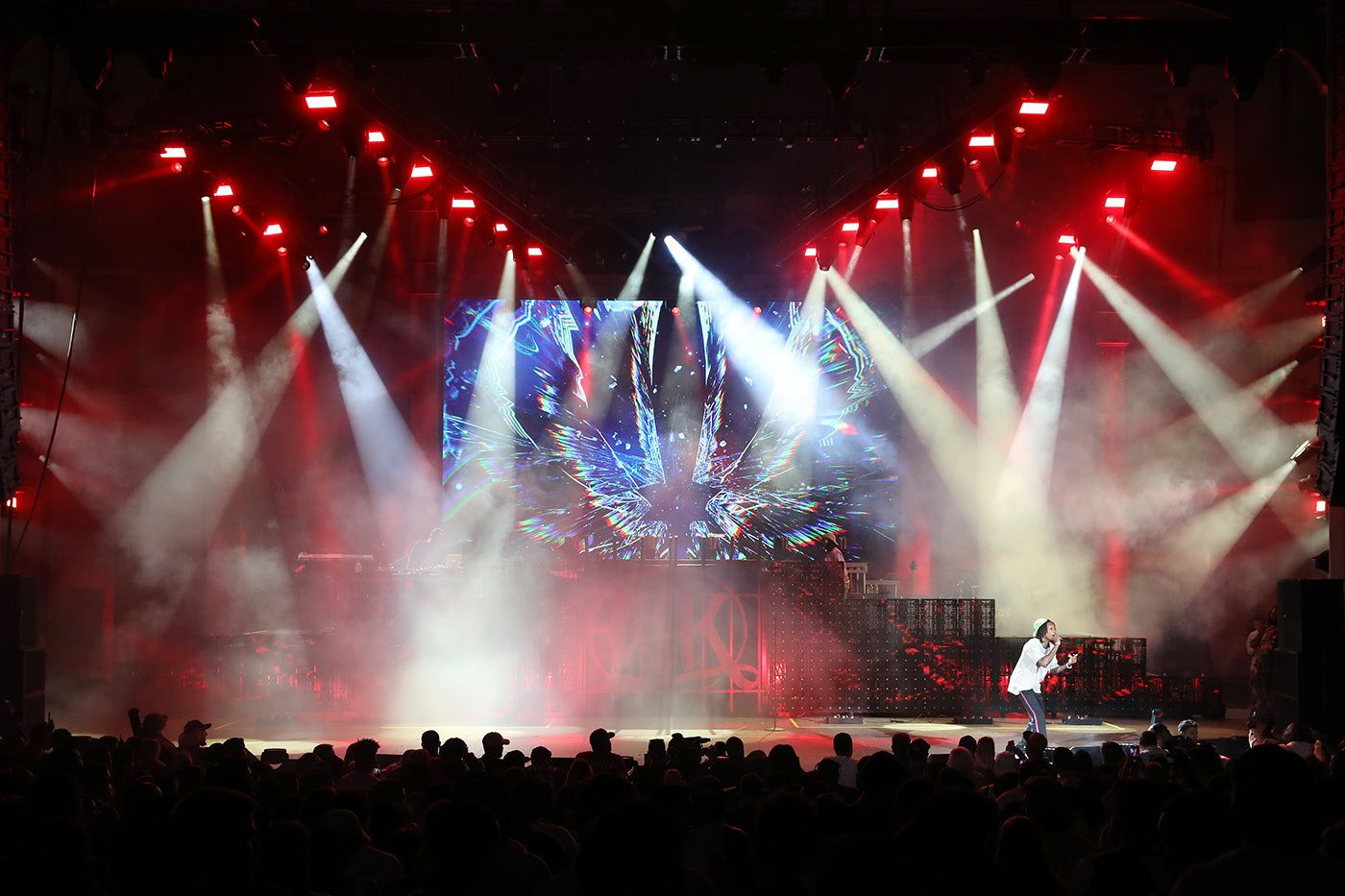
 That style, with all of its big looks, bold statements and roaring intensity was on full display this summer in Bullock’s work on the 27-city Wiz Khalifa and Rae Sremmurd
That style, with all of its big looks, bold statements and roaring intensity was on full display this summer in Bullock’s work on the 27-city Wiz Khalifa and Rae Sremmurd There were multiple features on Bullock’s ChamSys console that made this process go very smoothly. “Being able to import cue lists from prior tours — button settings, titles, timings etcetera – saved us hours during the programming phase,” he said. “Direct access to palettes for programming (group 1, position 3, color 4, beam 6, enter) gave us an unprecedented level of speed. Not having to go search through touchscreens was far more efficient when it came to raw speed. Last but not least are the faders. By having extra buttons when FX get added or things change on the fly, you always have a place to record when trying to operate and edit at the same time.”
There were multiple features on Bullock’s ChamSys console that made this process go very smoothly. “Being able to import cue lists from prior tours — button settings, titles, timings etcetera – saved us hours during the programming phase,” he said. “Direct access to palettes for programming (group 1, position 3, color 4, beam 6, enter) gave us an unprecedented level of speed. Not having to go search through touchscreens was far more efficient when it came to raw speed. Last but not least are the faders. By having extra buttons when FX get added or things change on the fly, you always have a place to record when trying to operate and edit at the same time.”